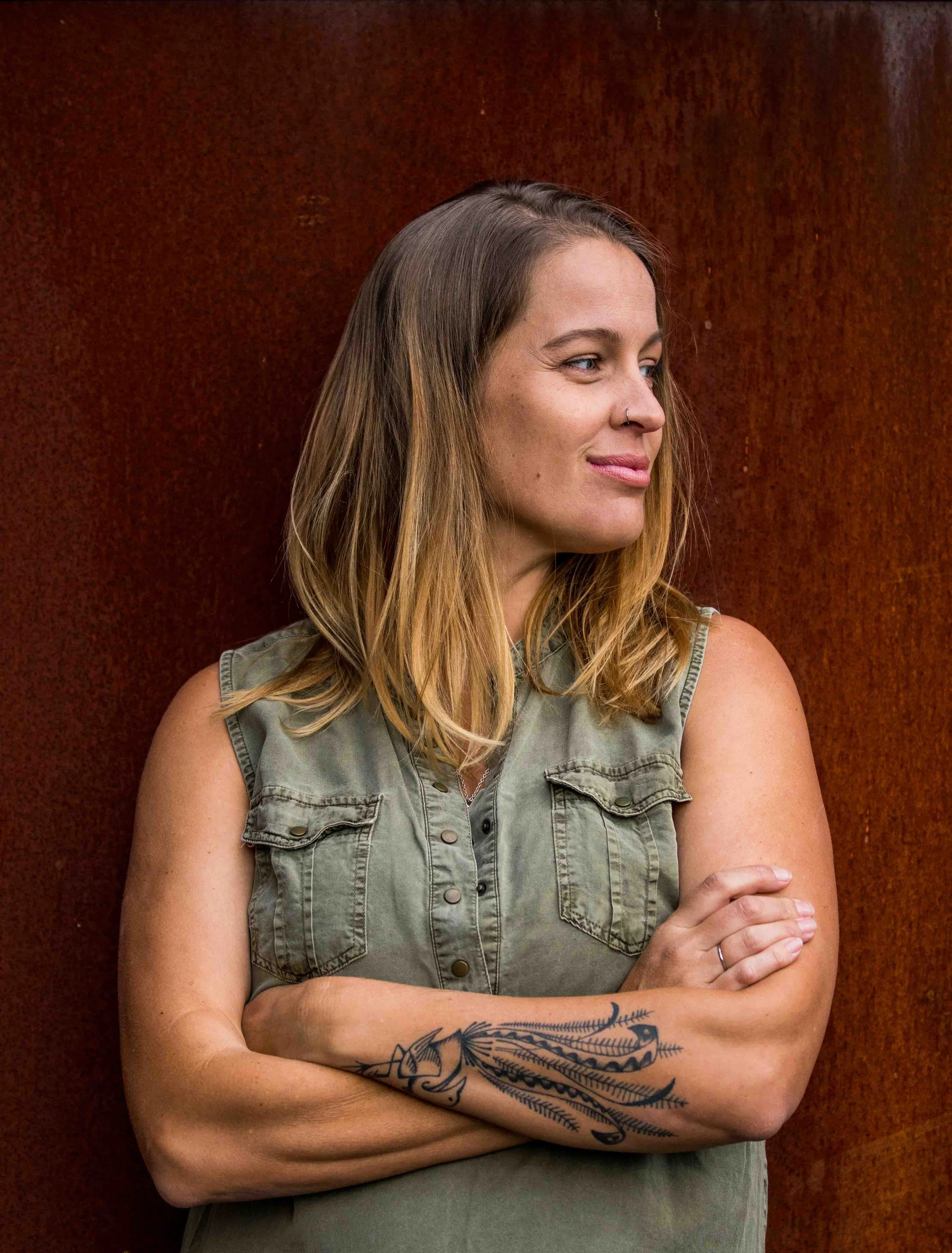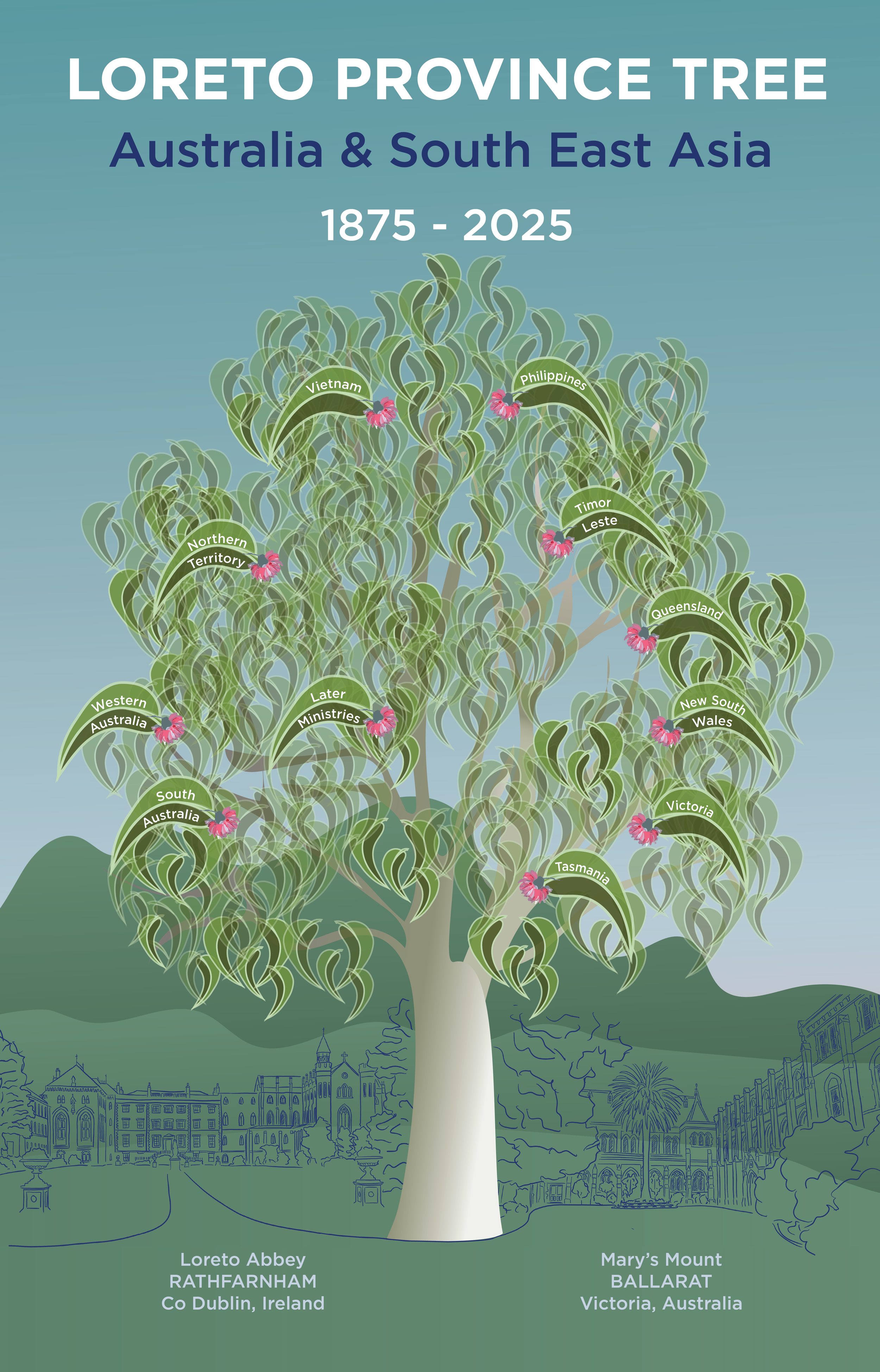This year we gather in many places to celebrate the ten humble, courageous and resilient women who left Ireland 150 years ago to embark on a journey about which they knew very little.
The storyline is good
Led by the diminutive and hard of hearing Mother Gonzaga Barry, these pioneer women, ranging in age from 18 to 55, came to give the rest of their lives in the service of Catholic education in Australia. They departed Dublin on May 20th 1875, and when someone asked Gonzaga how she felt, she stretched out her arms as she answered: My hands are in God’s hands. He can lead me where He wills. And lead her, God did!
Gonzaga Barry is considered unique in the history of Australian education, both in the span of her interests and the breadth of her approach. Very quickly she opened kindergartens, primary and secondary schooling, preparation for university, etiquette classes and the training of teachers in order to realise the potential she saw in every student.
The sisters were well educated themselves, they spoke various languages, one was already trained in teaching various subjects for a liberal education, they played musical instruments and sang, performed and directed plays and had a wonderful telescope and an Orrery for a study of the stars!
Mother Gonzaga Barry was determined that a Loreto education would produce well-informed women of faith and integrity, who could make a positive difference in whatever field they chose, while consciously committed to assisting those experiencing disadvantage.
Today, this educational legacy is found around the country, fulfilling Gonzaga’s desire that each generation leave behind them something on which others can build.
Our Pioneer Women
How to capture the energy, vibrancy and dedication of these ten pioneer women? What a gift they were to Mother Gonzaga Barry as their leader. What a gift they were to each other with their diverse personalities, skills and interests.
Their lives were nothing but turned upside down as they left their homeland and found a place amongst gold fever, vast landscapes and endless possibilities. Each one has a story much longer and richer than can be found on this banner. You can read further in the Archives section of the Province website.
Being upside-down in Australia they also seemed to be gifted with a desire “to open themselves to possibility beyond the limits of their imagination” to quote a line from the play Serious Business being performed at this exhibition. These became the graces associated with the development of a holistic approach to education that remains to this day.
Nothing could have been achieved had there not been the deliberate pursuit of an intelligent and ambitious programme of expansion and academic knowledge within these pioneers and the young Australian women who joined them quickly after their arrival. It was not only young people for whom they sought opportunities to suit their interests and abilities, but these women worked tirelessly in the Catholic community, providing guidance in pastoral care, establishing groups for sharing spirituality and they quickly began teaching in the local parish schools.
Celebrating Feminine Fortitude
To honour the ministry of the Good Shepherd Sisters in Melbourne, and especially Abbotsford, two artists created an installation of five 3 metre tall mannequins titled Feminine Fortitude.
The mannequins were dressed as religious women in a traditional habit and wore skirts featuring a number of aspects of life in the Abbotsford Convent. With permission, we were fortunate to imaginatively recreate this creative work.
We must voyage
Jessica Dutton
Jess has always had a passion for poetry, so when she began her research into Mother Gonzaga Barry’s life and work, it felt natural to put it into the poetic form. She says her writing is often underpinned by an ecofeminist philosophy, using natural imagery as symbols and motifs; this lens suited a contemporary interpretation of some of Mother Gonzaga Barry’s original work completely due to her unwavering appreciation of nature and her constant empowerment of women in the face of oppressive patriarchy.
In her role as middle leader and English teacher at Loreto College Coorparoo, Jess aims to champion the success and strength of the women and girls in the Loreto community. Jessica hopes that these poems capture the spirit of the stories and places established and nurtured by the Loreto Sisters.
we are wild flowers
Mother Gonzaga told us to look
for the golden wattles blooming
the tiny wild flower
nature is a privilege
we must fight to protect
the eucalypt is hearty - able to weather
fires and storms
but the blossoms are fragile.
Wild, unkempt
laden with nectar
the flower unfurls.
handprints in stone
having put her hands
in laying foundation we carve
out a place in the earth which
hands that span time
have altered / have built upon
even if the stones crumble with time
even in metaphor we will meet within.
iridescence
when we think of pearls, there comes
a traditionalist
femininity
but,
there is much more—
take the baroque pearl, uneven
sacred in its rare shape
we champion unique womanhood here
where upon the small grain the
nacre —mother of pearl— forms
builds / encases / creates
iridescent & imperfect strength.
looking back
we look back
preserve the relics
trace the hand-prints
laid in stone
but,
we must not linger
we cannot stay, on a familiar shore
looking out, we must voyage,
into the storms at sea
because women are capable
of so much more
redefinition
is always possible.
Planets, Pearls, and Possibilities
Mother Gonzaga Barry and her nine companions, as a team they pioneered a comprehensive approach to provide for all students attending their schools: from the little ones to the older years, from the seriously inquisitive and academic to the highly practical and artistic and combinations of all in-between. There was no one-size fits all approach and Gonzaga wrote about her desire that beauty and wonder, creativity and imagination be a constant source of recognising the work of the Creator in daily life.
At the practical level, she had a printing press installed in the school, she organised the students in teams to write, print and distribute the first school newspaper, she had a number of languages taught, she organised education meetings for teachers over the summer holidays and invited overseas experts, she had music and art taught to the students and performed in local soirées, she established a teacher training facility and one of the first free kindergartens and along with schools for fee-paying students she arranged for the education of those girls without means. And the list goes on.
Play: Serious Business
Brigid Coleridge - Playwright
Brigid is a violinist and poet who divides her time between Australia and the US. She is a founding member of the critically acclaimed US-based Merz Trio, and performs internationally as a recitalist and chamber musician.
As an artist working in multiple mediums, Brigid is committed to interdisciplinary exploration and collaboration. Her projects often combine her interests in music and literature, with particular attention paid to the theatrical possibilities of performance. Brigid’s poems have appeared in Australian and International publications, and she is the winner of the 2023 Gwen Harwood Poetry Prize.
Jen Davis - Producer
Jennifer began her career with 15 years in broadcast media and advertising, contributing to leading networks like the ABC and Channel Seven, and cutting her teeth as a senior producer with top creative agencies such as Chello and Cream Studios.
But the real adventure began when she
co-founded Producinator Co. with her partner Jacob, crafting compelling content for adventure travel brands and impactful non-profits like the Children’s Cancer Institute, Active Hearts Foundation, and 1 Million Women. Her journey soon took an exciting turn when she connected with the Marketing team at Loreto Ministries, and in 2022, a conversation with Sr Sandra Perrett about the 150-year celebrations — and a small live production idea — opened a whole new creative chapter.
In 1975 Sr Veronica Brady produced a Centenary Play in Ballarat called “If I must glory”. In the literary style of the skilful and witty Sr Veronica, the play was a conversation between a narrator and Mother Gonzaga Barry, inviting us to go behind the day-to-day life of the ‘little mother’ to experience, understand and appreciate that hers was an amazing spiritual expression of her day but with an abundant and mysterious deep knowing and awareness of grace.
Brigid Coleridge (Loreto Toorak 2005), is an internationally renowned violinist and poet. She performs regularly in Europe and the USA and in 2024 was in Australia with a full schedule of concerts. Her doctoral thesis was an exploration of Beethoven’s Missa Solemnis and is titled ‘From the Heart may it Go to the Heart’.
With this experience and accolades, Brigid was the perfect candidate to commission to take the original play and reimagine it in a 21st Century context using the writings of Mother Gonzaga Barry in her letters to students as published annually in the school magazine Eucalyptus Blossoms. There became a synchronicity of Gonzaga with Brigid’s thesis title—the connection between composer, performer and listener is integral to one’s capacity to hear, reflect and respond.
When speaking with the Heads of Drama within each school, Brigid said, “as a student, the most immediate connection I had with major figures in the Australian Loreto order was through various quotations used at school assemblies and events.
My knowledge of context and cultural background was cursory and the quotations (particularly aim at something excellent) were more liable to prompt irritation than inspiration. My challenge was to adapt Sr Veronica’s play; with a special challenge of the project being that I felt little affinity to MGB; how an adaptation of language might work and how relationships worked in those days.”
“On reading Brady’s play and supplementary material, including a visit to the Ballarat archives, what was uncovered for me was a different character.
I realised that the argument that I had in my head with imaginary Gonzaga was actually something that she would have encouraged and enjoyed. So, the challenge became one of telling a story and interacting with this character.”
Brigid saw how Mother Gongaza could be brought to life for our modern times. As she notes for herself, “due to the nature of the music that I play (often written 200+ years ago), I’m interested in an understanding of history as a non-linear: how do we speak to the ways in which the past is alive in our present?”
“The idea of a hybrid performance involving technology for this play met my own background in creating ‘scores’ involving spoken text and music and working with a sound engineer in its production. This is something that you will see at work in ‘A Serious Business’.”
“Conversation (as a theatrical dynamic) means finding dialogue with a common ground even when it seems there is none, because ‘language’ is a big theme throughout the play.
The play uses some of Gonzaga’s actual words but in most encounters, I have sought to translate her ideas into a more contemporary, conversational language.”
“Lastly, I’d like to highlight a key theatrical decision: at almost no point in the entire play is Gonzaga’s voice given an embodied form. This decision is partly informed by my own remembered response to famous pictures of her as a student: while I can now appreciate them as fascinating representations, back then they made her seems absolutely foreign and utterly removed from my own present.”
“With the play, I was interested in offering a challenge to an audience immersed in a visual world and so what does it mean to have no image/physical presence with which to identify a voice? How does this change our listening and attention? How might it change our ideas?”
Enjoy and be challenged.
Institute Tree
and Province Tree
Deep in the Loreto Archives, Ballarat, lies the ‘Institute Tree’, a magnificent oil painting of a tree bearing the fruit of the IBVM and CJ foundations made from the establishment of Mary Ward’s Institute in 1609. This artwork was created by Mother Eugenie Haxo, an artist and the Consultor for the Superior of the IBVM Vincenza House in Italy. Mother Eugenie also created the Stations of the Cross and painted windows in the Chapel of Vicenza, a Roman Catholic cathedral in Veneto, northern Italy. The ‘Institute Tree’ was once an iconic centrepiece in the front hall of Mary’s Mount in Ballarat, displayed next to the statue of the Immaculate Conception and under the portrait of Mary Ward.
Fast forward to the present day, and we have reimagined this artwork in a contemporary context. The ‘Province Tree’ features all the places across the Australia and South East Asia province where Loreto Sisters have established schools and ministries over the past 150 years.












